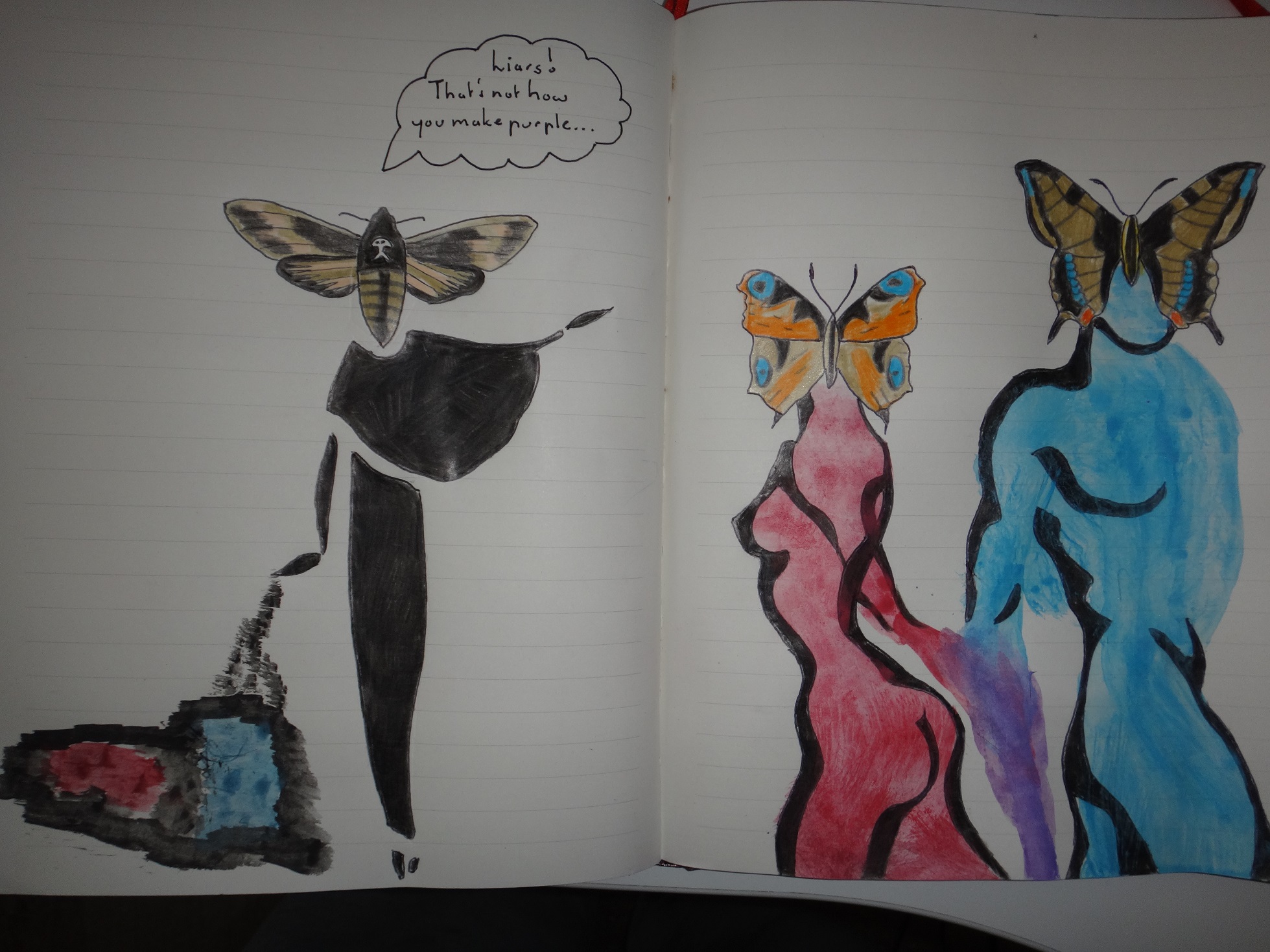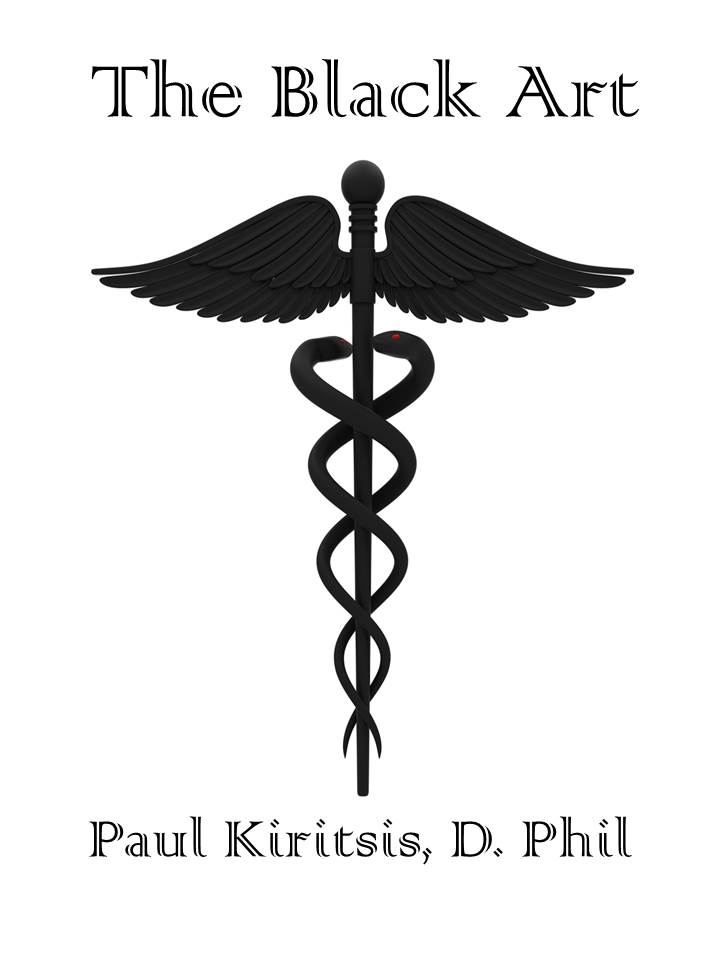
Conjunctio has always been used in alchemy as a symbol of culmination and is probably the most common and celebrated image of the Great Work. It means to unite or bind and together with the separatio forms the rotational cycle by which the prima materia (i.e. lead, mercury, salt, water, earth, etc.) is distilled of elementary impurities until it attains the refined, dense, and scintillating ruby-red quality recognized by alchemists as the ‘red stone’. Under the mediation of the Mercurial spirit and its hermetic fires, the matter in the alchemical vessel increases in purity through a series of ‘marriages’ or conjunctions between a cosmic pair of opposites; the active, masculine, and sulphurous principle personified as the sun or Sol and its complement in the passive, feminine, and mercurial one personified as the moon or Luna. In alchemical treatises, the pictorial stand-ins for the cosmic couplet reflect individual phases of a rectilinear and hierarchical chemical process which culminates with the transcendental union or reconciliation of the four purified elements. These, according to alchemo-Hermetic doctrine, synthesize the crown jewels of matter–gold, the ‘red stone’, and the elixir of immortality. At the crudest and most rudimentary level the couple are portrayed as copulations between animals like male and female dragons or birds of prey, hen and rooster, and dog and bitch; at the intermediary level by human sexual intercourse between a red man and a white woman; and at the highest and most sophisticated level as the royal wedding of a Red King to a White Queen.
Looking at the alchemical processes with psychological binoculars it becomes clear that all lesser conjunctions or cycles of solve et coagula leading to the triumphant synthesis of the Philosopher’s Stone are contaminated reconciliations between the archetypal configuration of the ego-conscious and the unconscious. Here I characterize the reconciliation as ‘contaminated’ because the psychic transmutations which occur in the cellar of the multi-tiered human psyche don’t’ always succeed in transforming the putrid and blackened slime of instinctive thought-desires into snow-white flakes of conscious sapience. Indeed, the ego frequently falls into the trap of prematurely embracing transpersonal contents irrupting from the collective unconscious as well as idealizations irreconcilable with the individuating Self’s natural tendencies that cannot be lived out in any practical, concrete, and meaningful way. This doesn’t occur just once or twice; it’s an ongoing cycle that keeps recurring until the day we cease to be.
At this time the whole point of therapy is to ensure that contemplative vision brought about by the ‘lunarized’ or intuitive conscious mind isn’t tainted again by invalidated projections streaming internally from the realm of shadow and Self and externally from comprehensive perspectives expressed by public figures, socio-political factions, religions, and cultural leagues. But once shone onto the whitened and spiritualized state of ego consciousness, all psychological projections are like double-edged swords; on one hand they can put the individual back on the royal road which leads to the eternal kingdom of enlightenment through perseverance and patience bestowed by grace, wisdom, and divine love, and on the other they can initiate a steep descent into slimy swamps where unrepentant desires for personal glory, wealth, power, and pleasure eventually smother his or her freedom and evolution. This is exactly why the albedo or whitening is not the culminating phase of psychotherapy. More work needs to be done in the counselling room to ground new ideals with the universal ocean of consensual reality and stop a psychic anchor just refurbished from drifting.
When juxtaposed with the sphere of transpersonal psychotherapy, the conjunctio is all about expressing the shift of gravity achieved during the preceding stage (the albedo) and applying it to everyday life. Now the inwardly-turned focus inverts and becomes one primarily concerned with coming out of our shells; with reengaging with real people in the real world; and with forging new relationships and healing preexisting ones. Its more comprehensive standpoint invariably means that one is much more grounded in consensual reality than before. In this illumined state one’s psychological projections are far less likely to be radically skewed or alloyed with fantasy content. Focusing on body language, tone of voices, physiognomies, and other tell-tale signs of one’s true unconscious will, the client can now listen and comprehend other people in a more objective manner instead of construing their words and actions to fit neatly into illusions of the world where everything is conspiring for or against his or her personal happiness and fulfillment.
For this reason alone analysands wishing to touch base with persons they’ve hurt or have been hurt by in the recent past are now encouraged to do so. As we already know positive, constructive interactions lead to closure and closure to healing. Jung tended to view this creative shift in terms of a man’s conciliatory attitude and growing identification with his anima (feminine soul) and a woman’s with her animus (masculine soul). According to Jungian philosophy re-identification fuels a newfound sense that we’re a lot more than the sum of our parts; more than the contingencies that weave together the circumstances of our current lives. Security is comforting, so comforting in fact that one is now able to express what he or she wants and expects from others without being riddled by irksome fears of rejection, ridicule, or backlash. As a rule of thumb life tends to take on a much more fortuitous and harmonious shade when awakened to the fact that entitlement to love is a birthright, not a commodity.
In my eyes, the reconciliation of opposites associated with conjunctio is illustrated best by an Egyptian cosmographical text to be found in the second transverse chamber of the Osireion in the Upper Egyptian city of Abydos, The Book of Night. In a pictorial sequence relating to the passage of the dead through the sixth hour, we encounter four androgynous beings arching backwards. All appear to be deeply engrossed in the bliss that only orgasm can bring. A red dotted line connects the mouths of these figures to an image of Khephera, a scarab symbolizing the morning sun, while another connects their phalluses to a red human child. The first is a clever allusion to the Heliopolitan birth of Shu, the god of the earth, and Tefnut, the goddess of the heavens, from the spittle of Atum. The second draws attention to the act of creative expression that occurs spontaneously during the separation of sky and earth. A solar orb rolls along the chest of each androgene, warming the heart area and spurring the ejaculation of semen which contains the seed encompassing the potentiality of new life, in this case a human child.
Ultimately The Book of Night makes clever use of an organic mechanism of replication (human conception) to allude to the ‘marriage’ or what Jung called the ‘mysterium coniunctionis’ between opposing cosmic principles that brings about the Philosopher’s Stone (the human child). A third neutral element or by-product of the reaction between fiery and watery principles has now entered into the equation and begins establishing connections with the outer world that betray a level of innovation and comprehension absent from the dynamics of its two parents. This binding element is able to coagulate opposing formative forces as a single, undifferentiated form and is called Philosophical Salt. In psychotherapy the presence of salt is synonymous with the inauguration of parameters and clearly defined strategies for relationships of different rubric. Those involving lovers and partners will operate differently to those that involve blood relations; those of family will again be different in dynamic and scope to those involving friends and acquaintances and so forth. When salt is present we are no longer random and reactive but strategic and proactive. Like salt which is an arbitrating force between two opposites, we begin to see that the life process isn’t a game monopolized by black and white but a composition of innumerable shades of grey. Other than ‘yes’ and ‘no’ there’s also ‘maybe’. You don’t have to accept or reject propositions bound to eat up chunks of your time and draw you into long-term relationships and commitments right off the bat. You can always say, “Let me think about this, ok? I need to mull it over a little while before I seal the deal.” It’s much better to buy time and make level-headed and calculated decisions based on facts and analysis rather than bite off more than you can chew on impulse and then end up being a bitter disappointment to everyone including yourself. Your conscious will should be the only thing filling out appointment slots in your diary or record book; don’t let anyone else enforce their own upon you. Ever!
In relation to the other alchemical stages, conjunctio is a proactive movement towards the formation or reformation of complex, functional relationships with other people in the real world. It’s about being able to understand where other people are coming from, accepting whatever consequences might ensue as a result of short-term or long-term interactions, and moving on. Mulling over things that are out of our immediate control is counterproductive, self-defeating, and poisonous to a soul yearning for illumination from transpersonal contents irrupting from the collective unconscious. Conjunctio, then, is about conscious networking in ways that are mutually satisfying and productive for all involved. Clients who fail to forge these three-dimensional relationships in the real world are at a deadlock and cannot penetrate deeper into the therapeutic cycle.









